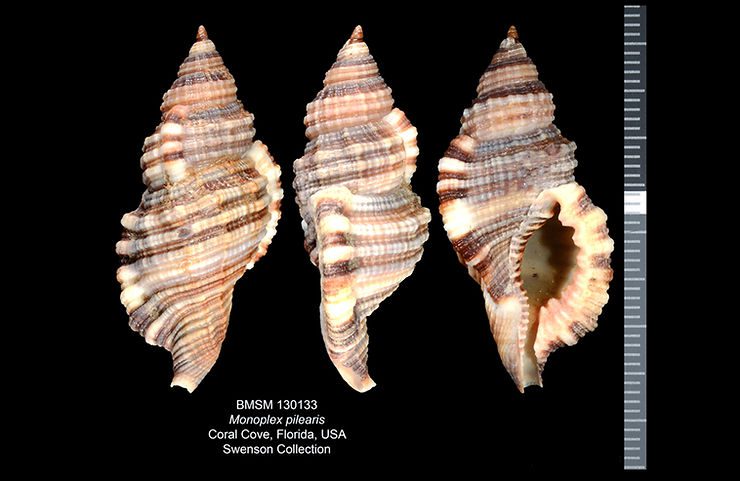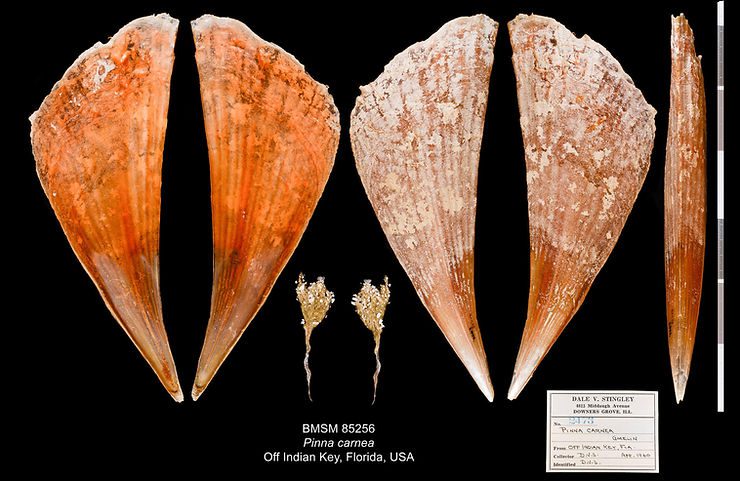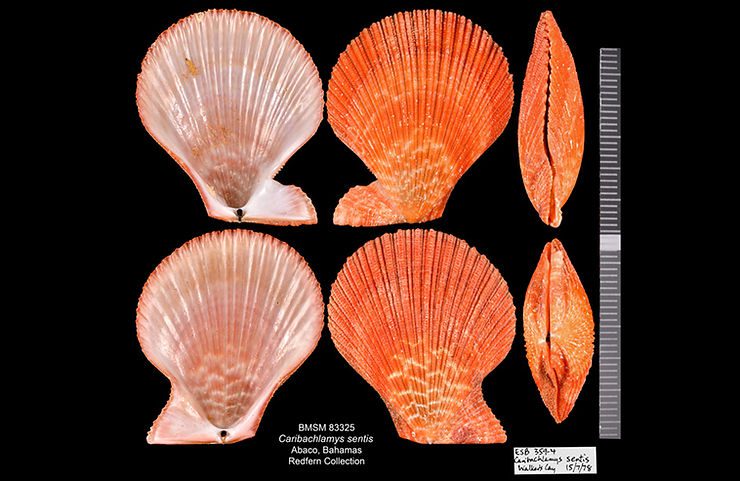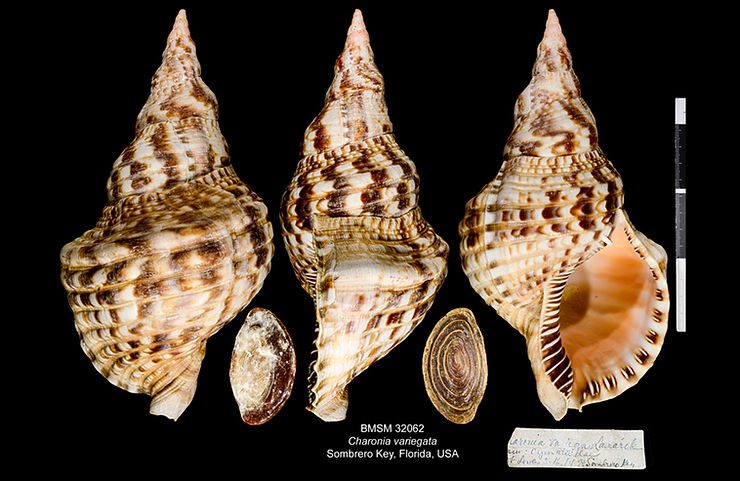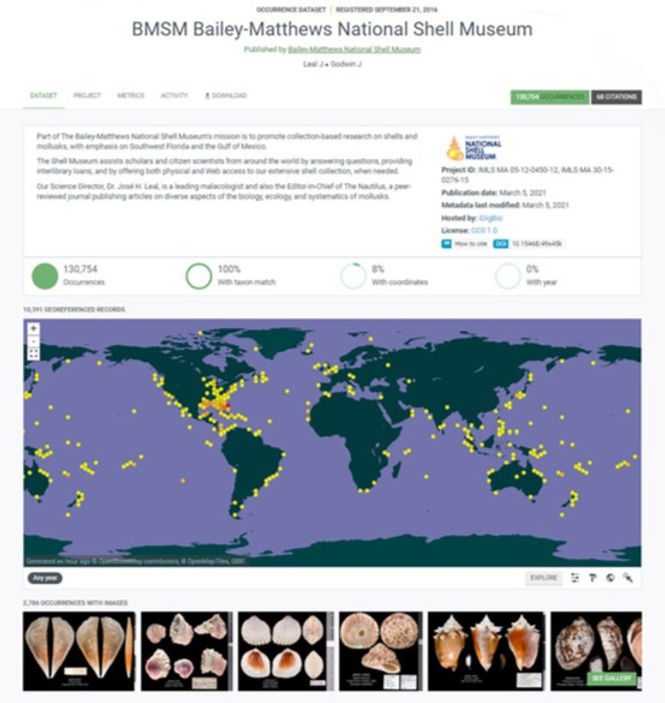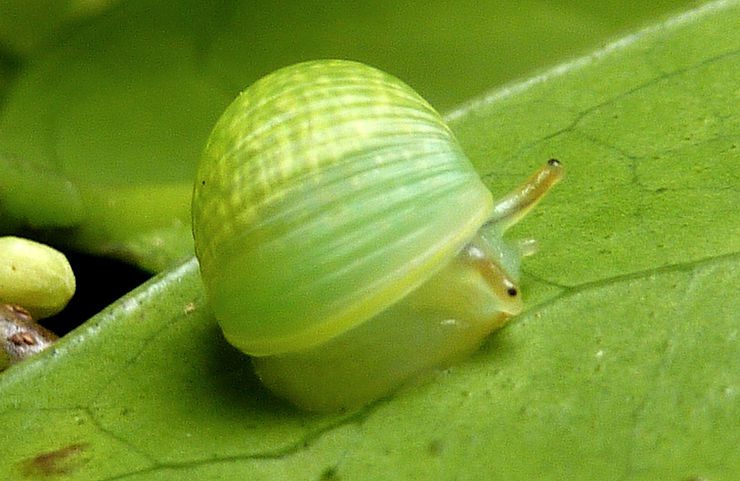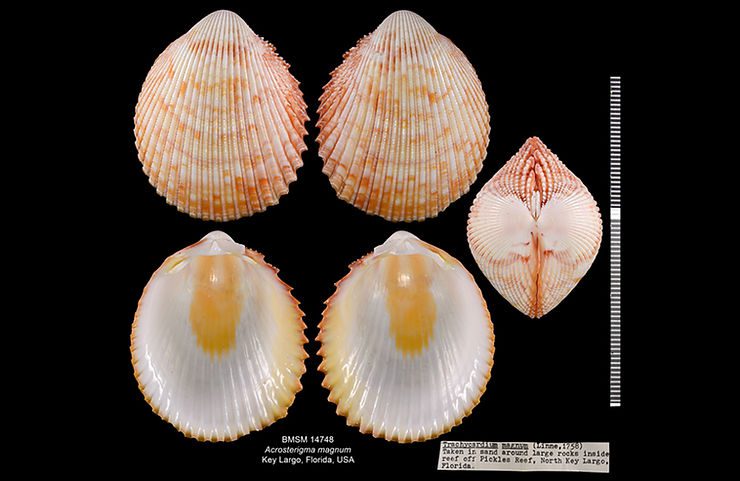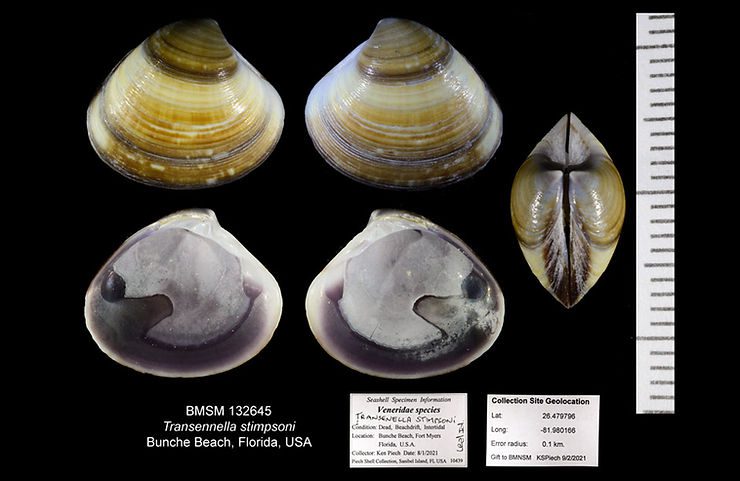
Shell of the Week: The Banded Transennella
Transennella stimpsoni Dall, 1902 reaches 14 mm in length. The rounded-trigonal shell is smooth except for very low commarginal (“concentric”) ridges. The shell color is usually white, often with brown or violet chevron-like markings, internally infused with purple. The outer shell layer, or periostracum, is varnish-like, yellowish. Compare with the locally occurring Transennella conradina, which is more pointed posteriorly and lacks the purple color. Also known as Stimpson's Transennella. This
